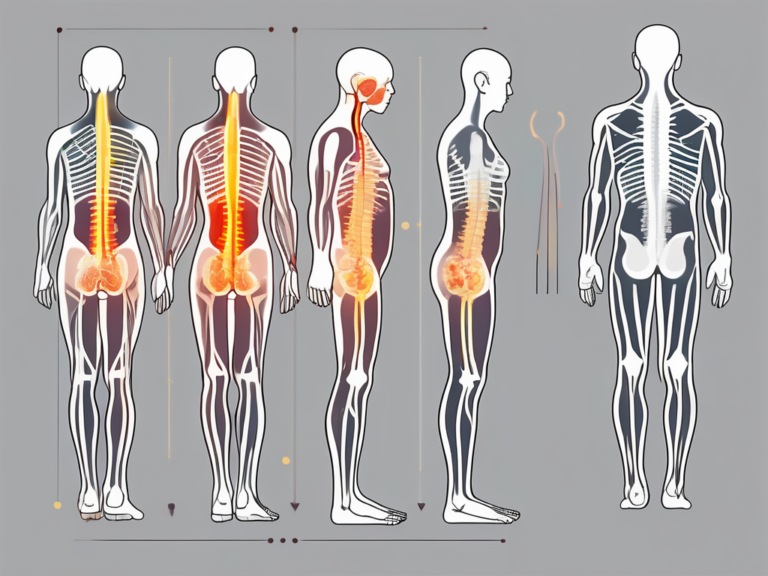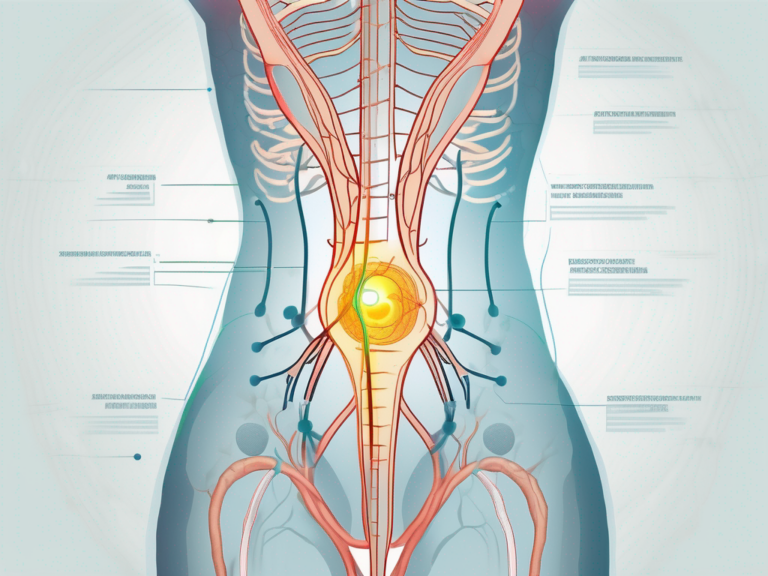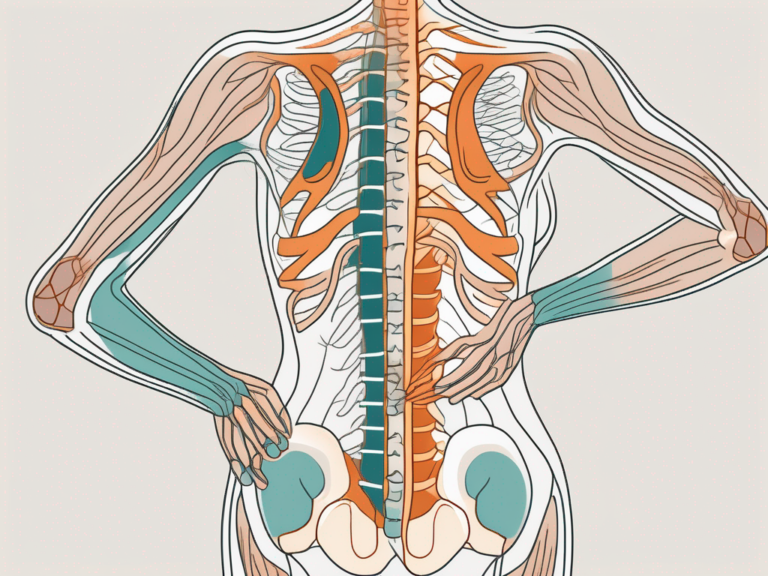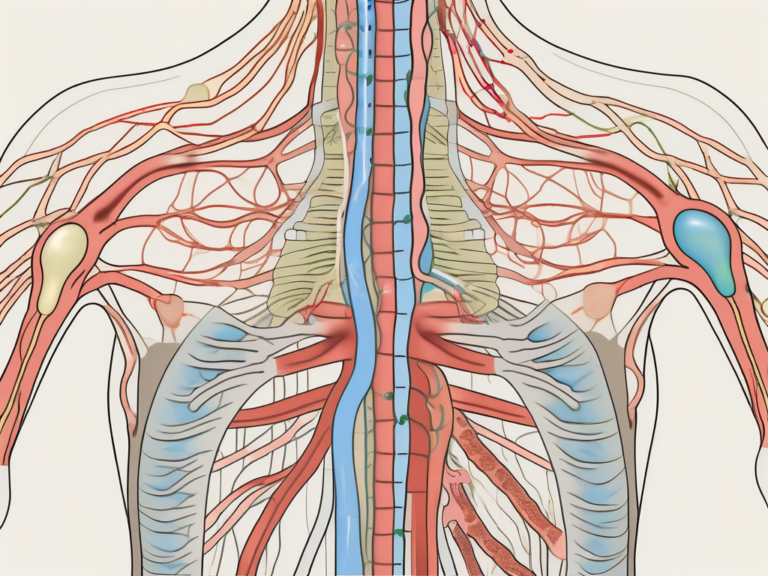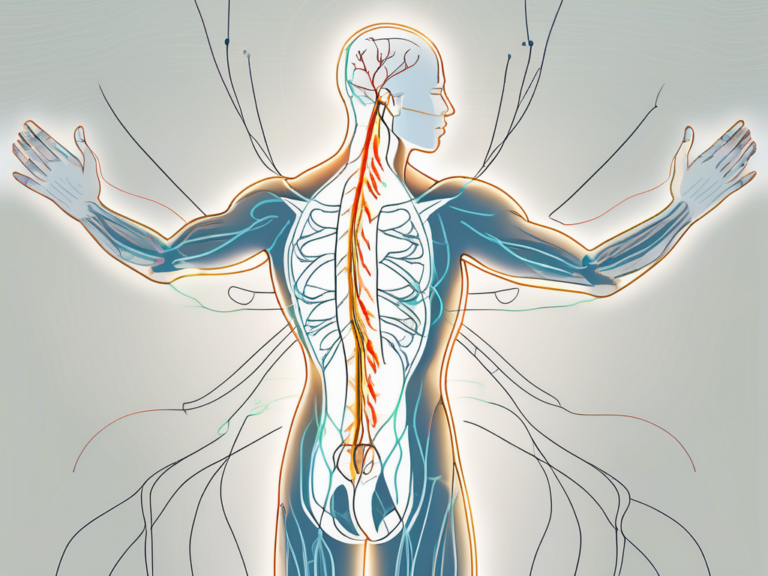How Long Is Sacral Nerve Stimulation Surgery Recovery?
Sacral nerve stimulation surgery is a procedure that can bring relief to individuals suffering from a range of conditions, including urinary and fecal incontinence, chronic pelvic pain, and overactive bladder. Like any surgical procedure, it requires a certain amount of recovery time. Understanding the process and timeline of sacral nerve stimulation surgery recovery can help individuals prepare themselves mentally and physically for the journey ahead.
Understanding Sacral Nerve Stimulation Surgery
Sacral nerve stimulation surgery, also known as sacral neuromodulation, is a groundbreaking procedure that offers hope to individuals struggling with pelvic floor dysfunctions. This innovative surgical technique involves the implantation of a small device that delivers electrical impulses to the sacral nerves, which play a vital role in controlling various pelvic floor functions, such as bladder and bowel control.
The purpose of sacral nerve stimulation is to improve bladder and bowel control, reducing symptoms such as urinary and fecal incontinence, urgency, and frequency. For individuals who have not responded well to other treatments, such as medication or behavioral therapies, sacral nerve stimulation can provide much-needed relief and significantly enhance their quality of life.
The Purpose of Sacral Nerve Stimulation
Living with pelvic floor dysfunctions can be challenging and emotionally distressing. The constant worry and embarrassment associated with urinary and fecal incontinence can have a profound impact on an individual’s self-esteem and overall well-being. Sacral nerve stimulation offers a ray of hope by targeting the root cause of these issues and providing a long-term solution.
By delivering electrical impulses to the sacral nerves, sacral nerve stimulation helps to regulate the communication between the brain and the pelvic floor muscles. This improved communication allows for better coordination and control, reducing the frequency and severity of symptoms. With sacral nerve stimulation, individuals can regain their independence and enjoy a more active and fulfilling life.
The Procedure of Sacral Nerve Stimulation Surgery
The journey towards sacral nerve stimulation surgery typically involves two phases: the trial phase and the permanent implantation phase. The trial phase is a crucial step in determining the effectiveness of the procedure for each individual. During this phase, a temporary electrode is placed near the sacral nerves, and the device is programmed to deliver electrical impulses.
Throughout the trial period, patients closely monitor their symptoms and record any improvements they experience. This trial phase allows both the patient and the medical team to assess the potential benefits of sacral nerve stimulation and make an informed decision about proceeding with the permanent implantation.
If the trial period is successful and the patient experiences significant improvements in their symptoms, the next step is the permanent implantation of the device. This is a separate surgical procedure that involves the placement of a small, battery-powered generator under the skin, usually in the upper buttock area. The generator is connected to the electrode, which remains near the sacral nerves.
Once the permanent implantation is complete, the device can be programmed and adjusted to meet the specific needs of the patient. The electrical impulses delivered by the device can be customized to provide optimal relief and control over bladder and bowel functions.
Regular follow-up appointments are essential to ensure the device is functioning correctly and to make any necessary adjustments. The medical team will work closely with the patient to monitor their progress, address any concerns, and provide ongoing support throughout their sacral nerve stimulation journey.
In conclusion, sacral nerve stimulation surgery is a remarkable advancement in the field of pelvic floor dysfunctions. By targeting the sacral nerves and improving communication between the brain and pelvic floor muscles, this procedure offers hope and relief to individuals struggling with bladder and bowel control issues. With the help of sacral nerve stimulation, individuals can regain their confidence, independence, and overall quality of life.
The Recovery Timeline for Sacral Nerve Stimulation Surgery
The recovery timeline for sacral nerve stimulation surgery can vary from person to person. It is important to note that individual experiences may differ, and it is essential to follow your doctor’s advice throughout the recovery process.
Immediate Post-Operative Period
After the surgery, you will be taken to a recovery room for close monitoring. The duration of this immediate post-operative period depends on various factors, including the complexity of the surgery and your overall health. You may experience some pain, discomfort, or swelling at the incision site. Your healthcare team will provide you with appropriate pain management and instructions on wound care before you are discharged.
During this time, it is crucial to rest and allow your body to recover from the surgical procedure. Your healthcare team will closely monitor your vital signs and ensure that you are comfortable. They will also provide you with any necessary medications to manage pain and reduce swelling.
It is common to feel tired and groggy immediately after the surgery due to the effects of anesthesia. This is normal and should improve as the anesthesia wears off. Your healthcare team will closely monitor your recovery and provide any necessary support to ensure a smooth transition from the operating room to the recovery room.
Short-Term Recovery Phase
During the short-term recovery phase, which typically lasts a few weeks, your body will need time to heal from the surgical procedure. You may need to take some time off work and limit physical activities that could put stress on the incision site. Your doctor may recommend avoiding heavy lifting or strenuous exercises during this period to ensure proper healing. It is crucial to follow your doctor’s instructions to minimize the risk of complications.
During this phase, you may experience some discomfort or soreness at the incision site. This is normal and can be managed with over-the-counter pain medications or prescribed pain relievers. It is important to keep the incision area clean and dry to prevent infection. Your healthcare team will provide you with detailed instructions on how to care for the incision site and any necessary dressings or bandages.
It is also important to listen to your body and rest when needed. Your body is healing, and it is normal to feel fatigued during this time. Make sure to get plenty of rest and eat a healthy diet to support the healing process.
Long-Term Recovery Phase
The long-term recovery phase can extend from several weeks to a few months. During this time, your body will continue to adjust to the presence of the implanted device, and you may notice improvements in your symptoms as the adjustment period progresses. Regular follow-up appointments with your doctor will allow them to monitor your progress and make any necessary adjustments to the stimulation settings.
As you progress through the long-term recovery phase, it is important to communicate any changes or concerns to your healthcare team. They will be able to provide guidance and support as you navigate the recovery process. It is also essential to follow any recommended lifestyle changes or physical therapy exercises to optimize the benefits of the sacral nerve stimulation surgery.
During this phase, you may experience fluctuations in your symptoms as your body adapts to the implanted device. It is important to keep track of any changes and report them to your doctor. They will be able to assess your progress and make any necessary adjustments to ensure optimal results.
Remember, everyone’s recovery journey is unique, and it is important to be patient with yourself. Healing takes time, and with proper care and support, you can expect to see improvements in your symptoms over time.
Factors Influencing Recovery Time
Several factors can impact the duration of the recovery process after sacral nerve stimulation surgery. These factors include:
Patient’s Overall Health
Good overall health can contribute to a smoother recovery process. If you have any underlying medical conditions or are taking medications, it is important to discuss them with your doctor before the surgery.
When it comes to recovering from sacral nerve stimulation surgery, your overall health plays a significant role. A healthy body is better equipped to handle the stress of surgery and heal more efficiently. This means that maintaining a balanced diet, exercising regularly, and managing any chronic conditions are crucial steps to take before undergoing the procedure.
Additionally, it is important to inform your doctor about any medications you are currently taking. Certain medications can interfere with the healing process or interact negatively with anesthesia. By discussing your medication regimen with your healthcare provider, they can make any necessary adjustments to ensure a smooth recovery.
The Skill and Experience of the Surgeon
The skill and experience of the surgeon performing the procedure can also influence the recovery time. Choosing a surgeon who specializes in sacral nerve stimulation surgery can increase the likelihood of a successful outcome and a smooth recovery.
When it comes to selecting a surgeon for sacral nerve stimulation surgery, expertise and experience are paramount. A surgeon who specializes in this specific procedure will have a deep understanding of the intricacies involved and will be equipped to handle any potential complications that may arise.
Furthermore, a skilled surgeon will be able to perform the surgery with precision, minimizing the risk of complications and reducing the overall recovery time. By choosing a surgeon who has a proven track record in sacral nerve stimulation surgery, you can have confidence in the outcome and expect a smoother recovery.
Post-Operative Care and Rehabilitation
Proper post-operative care and rehabilitation play a crucial role in the recovery process. Following your doctor’s instructions regarding wound care, medication use, and physical therapy can promote faster healing and optimal recovery.
After sacral nerve stimulation surgery, the road to recovery continues beyond the operating room. Your doctor will provide you with detailed instructions on how to care for your incision site, manage any pain or discomfort, and gradually resume your normal activities.
Wound care is of utmost importance during the recovery period. Keeping the incision site clean and dry, as well as changing dressings as instructed, can help prevent infection and promote proper healing. Additionally, your doctor may prescribe pain medication to manage any post-operative discomfort.
Physical therapy and rehabilitation exercises are also an integral part of the recovery process. These exercises help strengthen the muscles and nerves affected by the surgery, allowing for a quicker return to normal function. By diligently following your doctor’s recommended rehabilitation program, you can optimize your recovery and regain your quality of life.
Potential Complications and How They Impact Recovery
While sacral nerve stimulation surgery is generally safe and effective, as with any surgical procedure, there are potential risks and complications that can impact the recovery process. It is important to discuss these risks with your doctor before making a decision about whether the procedure is right for you.
Infection Risks and Management
Infection at the surgical site is a potential complication following sacral nerve stimulation surgery. It is essential to follow your doctor’s instructions regarding wound care and hygiene to minimize the risk of infection. Proper wound care includes keeping the incision site clean and dry, changing dressings as instructed, and avoiding activities that may introduce bacteria to the area.
In some cases, your doctor may prescribe antibiotics to further reduce the risk of infection. It is important to take the full course of antibiotics as prescribed, even if you start feeling better before completing the medication. If you notice any signs of infection, such as increased pain, redness, swelling, or drainage from the incision site, it is important to seek medical attention promptly. Early detection and treatment of infection can help prevent further complications and promote a smoother recovery.
Device-Related Complications
In rare cases, device-related complications, such as device migration or malfunction, may occur following sacral nerve stimulation surgery. The implanted device, which delivers electrical stimulation to the sacral nerves, plays a crucial role in managing symptoms and improving quality of life. If you experience any changes in the effectiveness of the stimulation or have concerns about the device, it is crucial to consult with your doctor.
Your doctor will evaluate the device and may perform tests to assess its functionality. In some cases, adjustments or replacements may be necessary to ensure optimal results. It is important to communicate openly with your doctor about any concerns or issues you may have. They are there to support you throughout the recovery process and will work with you to address any device-related complications that may arise.
Managing Pain and Discomfort During Recovery
Pain and discomfort are common during the recovery period after sacral nerve stimulation surgery. Your doctor will prescribe appropriate pain medications to help manage any discomfort you may experience. It is important to follow the recommended dosage and inform your doctor if the pain becomes severe or unmanageable.
In addition to pain medications, there are various strategies you can incorporate into your recovery routine to help alleviate pain and discomfort. These may include applying ice packs to the surgical site, practicing relaxation techniques such as deep breathing or meditation, and engaging in gentle exercises recommended by your healthcare team.
Physical therapy may also be beneficial in promoting healing and reducing pain. Your doctor may refer you to a physical therapist who can guide you through exercises and techniques that can help improve mobility and strength in the affected area.
It is important to remember that everyone’s recovery process is unique, and it may take time for your body to adjust to the surgical intervention. Be patient with yourself and follow your doctor’s instructions for a successful recovery.
Tips for a Smooth Recovery Process
While everyone’s recovery journey is unique, here are some general tips that may help make the process smoother:
Preparing for the Surgery
Before the surgery, make sure to follow any pre-operative instructions given by your doctor. This may include fasting before the procedure and avoiding certain medications that could interfere with the surgery.
Post-Surgery Care at Home
Once you are discharged, it is important to follow your doctor’s instructions for post-surgery care at home. This may include keeping the incision site clean and dry, avoiding activities that could strain the incision site, and taking any prescribed medications as instructed.
Physical Therapy and Rehabilitation
Your doctor may recommend physical therapy or rehabilitation exercises to aid in the recovery process. These exercises can help strengthen the pelvic floor muscles and improve overall bladder and bowel control. It is crucial to attend all recommended sessions and follow the guidance of the physical therapist.
Frequently Asked Questions About Sacral Nerve Stimulation Surgery Recovery
Can I Return to Work After Surgery?
The timing of your return to work will depend on various factors, including the nature of your job and the physical demands it entails. It is essential to consult with your doctor, who can provide personalized guidance based on your individual situation.
What Activities Should I Avoid During Recovery?
During the recovery period, it is generally recommended to avoid strenuous activities that could strain the incision site or put excessive pressure on the pelvic area. Your doctor can provide specific guidance on the activities to avoid and when it is safe to resume them.
When Should I Seek Medical Attention During Recovery?
If you experience severe pain, excessive bleeding, signs of infection, or any other worrisome symptoms during the recovery period, it is important to seek medical attention promptly. Your doctor can evaluate your condition and provide the necessary support and treatment.
In summary, sacral nerve stimulation surgery recovery can vary from person to person. While the timeline may differ, it is important to follow your doctor’s instructions and attend all follow-up appointments to ensure a smooth and successful recovery. If you are considering this procedure, consult with a healthcare professional, who can provide personalized advice based on your unique circumstances.

